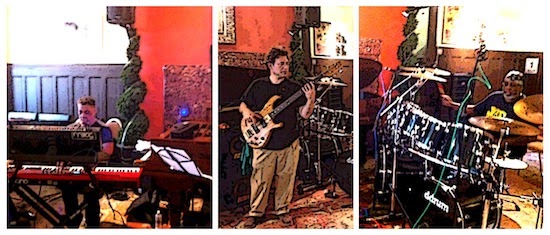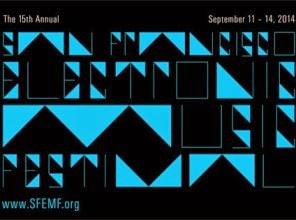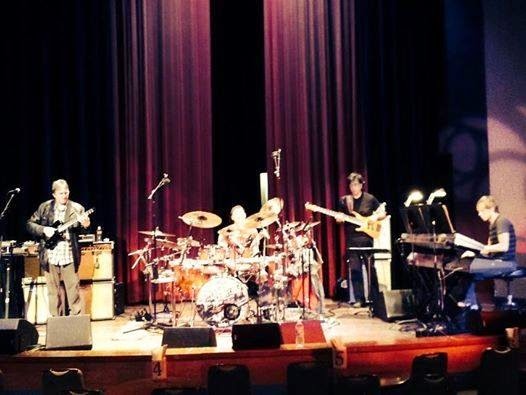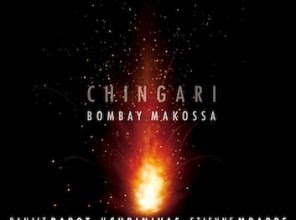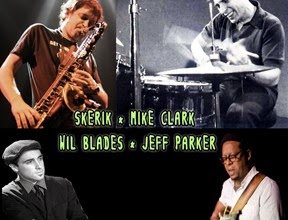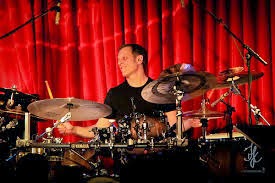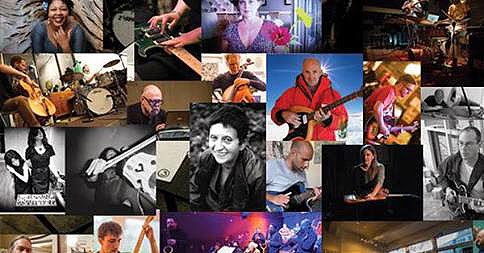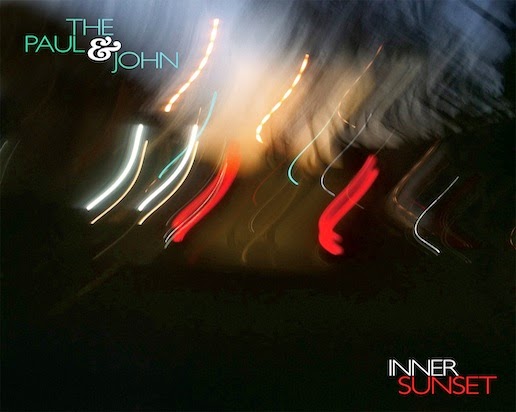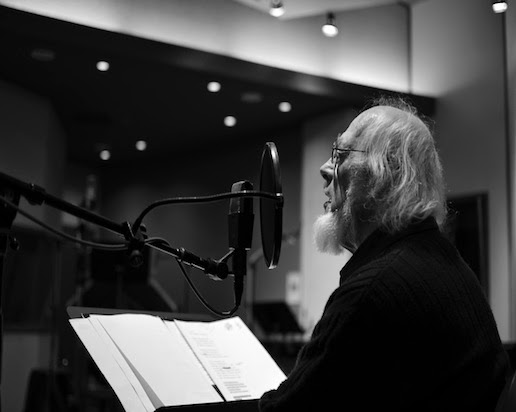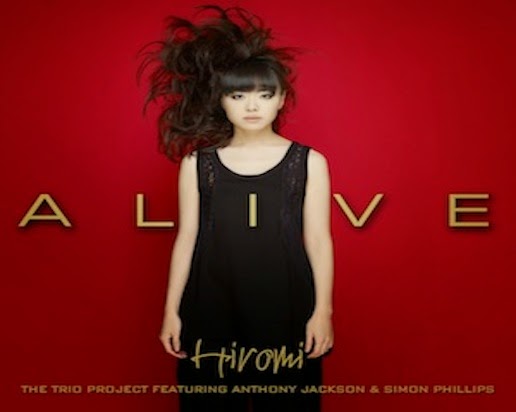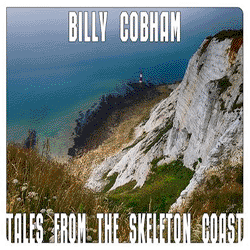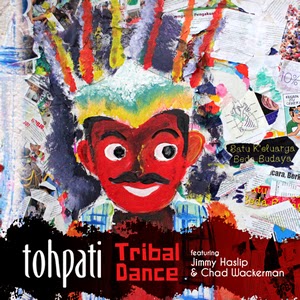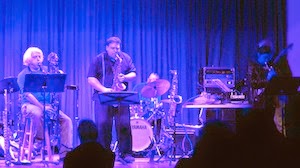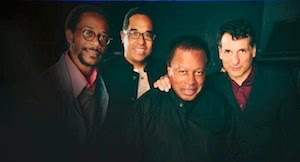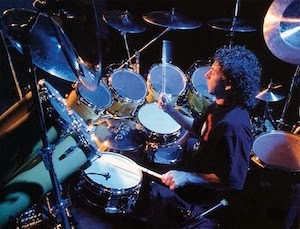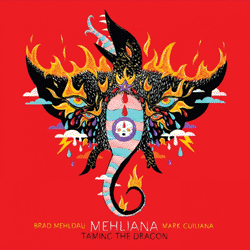The Lords of Outland will release The Proceedings of Dr. Ké on April 22, 2014 the group’s 12th recording. To celebrate the release and their 20th Anniversary, Lords of Outland will perform at the Outsound’s Flagship SIMM Series at the Musicians Union Hall in San Francisco, starting at 7:30pm on Sunday, April 27. Tickets are $10, and will be available at the Door the night of the concert.
Saxophonist, composer Rent Romus started the Lords of Outland in 1994 a collective of like-minded musicians focusing on exploring improvisation, melody, noise, and sound art while acknowledging their jazz, rock, and blues roots. Under Romus’ direction the collective has developed original music ranging from unhinged guttural free improvisation to thematic suites inspired by abstract and socio-political prose, poetry, science fiction, and horror. Performing artists will include a cross section of past and current roster members:
Dave Mihaly - drums, Bill Noertker - bass, Philip Everett - drums, Ray Scheaffer - bass, Joshua Marshall – tenor saxophone, Collette McCaslin - trumpet, Joshua Allen – tenor saxophone, Darren Johnston - trumpet, Jim Ryan – tenor/alto saxophones, Rent Romus – alto/soprano saxophones
The Proceedings of Dr. Ké is inspired by the essays and fiction of experimental psychologist Dr. Charles Ponce on what he termed “Blade Runner Psychology”, as well as the mythical figure in Dr. Ponce’s fiction Dr. Ke. The writings of Dr Ponce straddle the fence between science and science fiction expanding Jungian psychology into the modern world by introducing futurist elements. It’s these elements that define the parameters of Romus' Compositions, which are meant to be invoking of both the futurist theme of Dr. Ponce’s work as well as his mystic interpretations of the words set to music.
Glenn Astarita, from All About Jazz says of Romus’ work with the Lords of Outland, "Romus' fiery romp is a no-holds barred exposition. He slices through steel with accuracy and ease, equating to a jovial soundscape, scraped with intensifying solos and Everett's colorific cymbals hits. They galvanize your neural system from start to finish, while projecting a take no prisoners approach throughout."
About the Musicians
Rent Romus “swings like death and hell” according to the late Danish writer and producer Jack Lind. Born in the great north of upper Michigan and growing up in the San Francisco Bay Area, Romus' work on the saxophone has been dubbed “ferocious” by the San Francisco Weekly and “central to the creative music world of the West Coast” by writer jazz critic Frank Rubolino. He has recorded exploring improvisation and composition in a wide variety of musical settings on over 35 albums both as a leader and sideman which have included Chico Freeman, John Tchiai, Vinny Golia, Thollem McDonas, Stefan Pasborg, Dave Mihaly, James Zitro, Kash Killion, Jon Bridsong, and Ernesto Diaz-Infante.
Collette McCaslin formally known as CJ Borosque, bay area based improviser, noise and modern visual artist. Her art is a blending of genres pulling from abstract and avant-garde traditions. She plays coronet and analog FX boxes configured in a “no-input” design which allows for the creation of sonic feedback and feedback sounds without the use of a typical sound source... her noise projects are currently created using the electrical signal that is within her gear.
Ray Scheaffer performs on fretless 6 strings, fretted 4 and 8 string basses using a host of electronic effects that are incorporated to be part of the instrument. After studying music theory and upright bass in high school and junior college, Ray has performed in a diverse array of ensembles from full orchestra to folk rock bands, and experimental improv groups going back to the 70s.
Philip Everett began music at the age of 9 on clarinet shortly there after moving on the drums when he was 13 where he began his studies in junior high school with Warren George from the Stan Kenton band. Warren believed in trial by fire and stuck Phillip in a room alone for an hour a day, told him to learn drum rudiments, and put him in advanced orchestra & marching band the following semester. That trial led him directly to Bartok, Debussy, and Gershwin as well as New Orleans style 2nd line marches. Furthering his studies he sought after George Marsh and Eddie Moore where he was taught the finer subtleties of the drums.
After studying drums with Andrew Cyril in New Jersey, Dave Mihaly this tall mantis-like creative master of the drums can be heard with countless groups and artists such as, Bando, Victoria Williams, and Eartha Kitt. He is however known in the Bay Area for his work with the Kalideophone Big Band, and After the End of the World Cortet. Mihaly can be heard on After the End of the World Cortet CD 13, Rent Romus' Lords of Outland, and Nortker's Moxie.
Bassist/composer Bill Noertker has been active in the Bay Area jazz and avant-garde scene since the late 1980s. Since 2001, he has lead his own ensemble, Noertker's Moxie, as a forum for his compositions inspired by visual artists such as Paul Klee, Wassily Kandinsky, Franz Marc, Salvador Dalí, and Joan Miró, architect Antoni Gaudí, poet Rainer Maria Rilke, sculptor David Beck, and others. Noertker has composed over 150 pieces of music for this group and has released eight CDs, including three CDs of his extended suite Sketches of Catalonia, and two volumes of his extended Blue Rider Suite. He has also composed music for three films that showcase the intimately-scaled sculptures of David Beck, and composed the score for a Nikos Koumoundouros film, The Commandments or the Nostril of Ektor Kaknavatos, that was selected for the Short Film Corner at the prestigious Festival de Cannes 2010. He is now at work scoring the upcoming Olympia Stone film “Curious Worlds: the Art and Imagination of David Beck.”
Joshua Marshall is a performer, composer, and improviser living in Oakland, CA. His work involves abstract narratives in musical form, systematic extensions of improvisatory practice, advanced studies in saxophone technique, and interactive performance with digital media. He has studied with Roscoe Mitchell, Fred Frith, Pauline Oliveros, Evan Parker, Zeena Parkins. His playing has been featured in festivals and conferences nationwide, including Providence Pixilerations events and the 2010 International Computer Music Conference. Joshua graduated from Brown University, earning a B.A. through the nationally renowned MEME program, and has an MFA in Music at Mills College.
Joshua Allen has created his own personal language on the tenor saxophone, with an emphasis on polytonal and asymmetrical phrasing, as well as extending the range and sonic ability of the instrument. He does this with constant emphasis and study of the overtone series, and the generation of multiphonics from the application of this process. He is currently teaching Fellowship students at the Brubeck Institute at the University of Pacific. His association with saxophonist Marco Eneidi led to working relationships with musicians such as Glen Spearmann, Matthew Goodheart, Damon Smith, and Cecil Taylor.
Poet, writer, philosopher and musician, Jim Ryan is an original member of the exploratory family of artists of the 20th century. His powerful playing style and truly original voice permeates the San Francisco Bay Area with vibrant spirit. He was born in St. Paul, Minnesota and began listening to bebop at age 15. In 1958 after obtaining a degree in philosophy from the University of Minnesota, Jim was drafted into the army and sent to Europe. After serving for 21 months, Jim found himself attending the Sorbonne in Paris France. After a short time he discovered he was infected with the writing bug and became involved with the beat poet community that was blossoming in France and throughout the world, rubbing elbows with such poets as Boroughs, and Ginsberg.
In 1975 he returned to the United States in search of a fresh start and settled in Washington, D.C. where he formed the Art Performance Group performing throughout the area. In 1987 he moved California and lived in Marin County until 1993 when he moved to Oakland and became part of the San Francisco Bay Area improv and jazz scene. After a long hiatus, in 1997, he launched one of his current groups Forward Energy featuring stellar artists like trumpet player Eddie Gale and drummer Donald Robinson. You can hear this pivotal Bay Area saxophonist presently with Forward Energy and the Jordan Glenn's Mindless Thing.
Since settling in San Francisco in 1997, Canada-born trumpeter/composer/songwriter Darren Johnston has collaborated and recorded with an extremely diverse cross-section of artists. His interests rotate around composing instrumental music, writing songs, and performing all styles of jazz, experimental and purely improvised music, as well as traditional music of the Balkans, Greece, Macedonia, Turkey, and the Arab world. These interests have coalesced into his primary ensemble of late, The Broken Shadows Family Band. He has also performed with luminaries such as Hamid Drake, Fred Frith, ROVA Sax Quartet, Rumen Shopov, Myra Melford, Ben Goldberg, Matt Wilson, and others.
Who: Rent Romus’ Lords of Outland
Where: Musicians Union Hall, 116 9th Street San Francisco, CA
When: Sunday, April 27, 2014, 7:30pm
Cost: $10 general $8 sen/stu
For information and tickets: http://www.outsound.org
Rent Romus: www.romus.net
